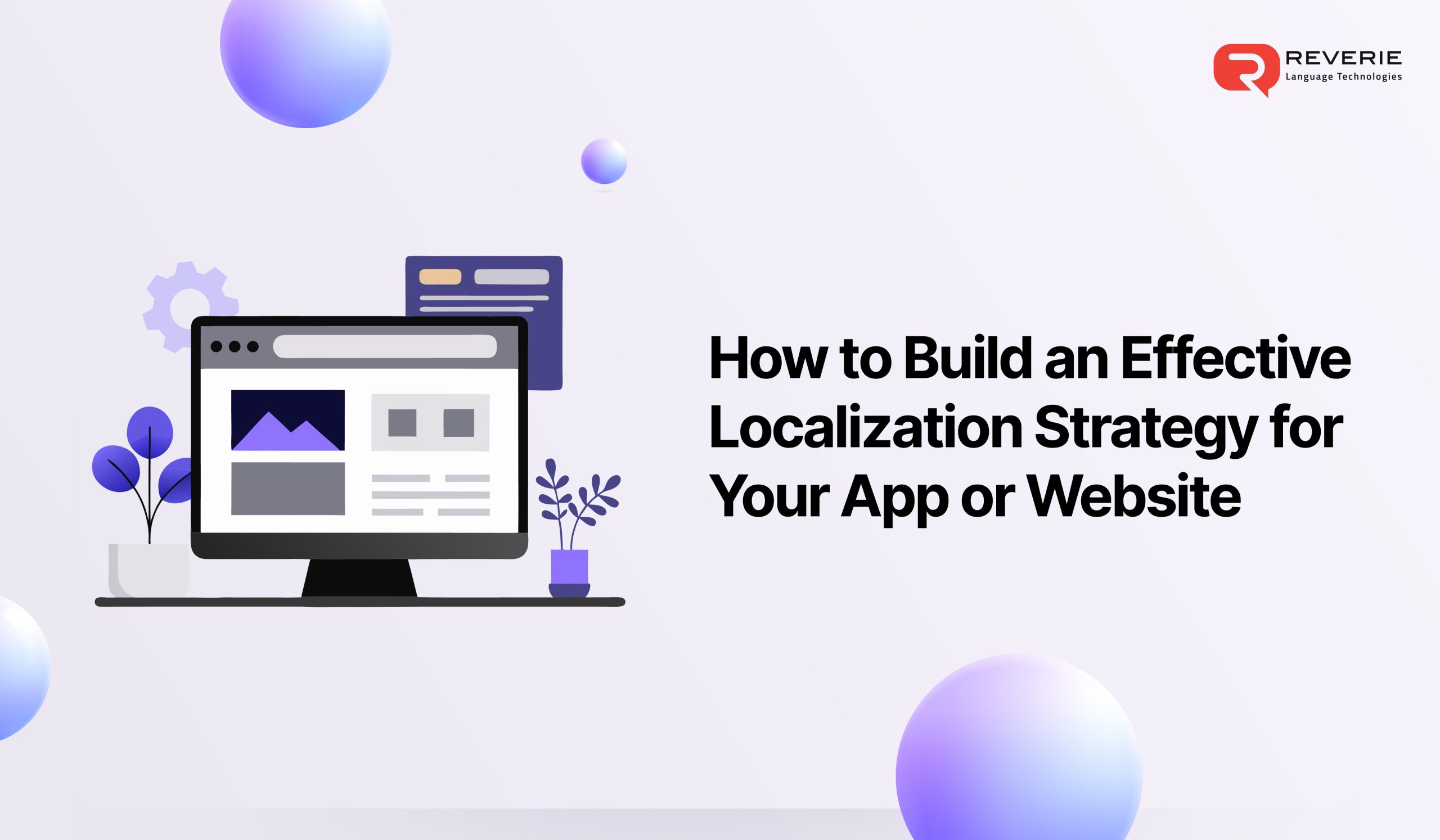Many global businesses expand into new markets with a translated app or website—only to realise users aren’t engaging the way they expected. That’s because successful market entry isn’t just about changing language; it’s about making your product feel native, intuitive, and aligned with local expectations.
Over 73% of online consumers prefer buying products in their native language, and with more than 5 billion internet users worldwide, ignoring localisation means risking massive share of the global market. A well-executed localisation strategy ensures that your app or website doesn’t just translate words but adapts to cultural expectations, user behaviour, and regional regulations. Companies that invest in localisation see higher user engagement, stronger brand trust, and better conversion rates across new markets.
To achieve this, businesses need a structured approach—one that seamlessly integrates localisation into their digital ecosystem. Below is a comprehensive blueprint to help you build an effective localisation strategy for your app or website.
Localisation Strategy: More Than Just Words
An effective localisation strategy goes beyond translating text—it ensures that every aspect of your app or website resonates with local users. According to CSA Research, 65% of consumers prefer content in their language, even if it’s of poor quality over perfect English content. This highlights how crucial it is to tailor your brand experience for each market.
What is Localisation Strategy?
Localisation adapts not just language but currency formats, date structures, payment methods, images, colors, user interfaces, and cultural nuances. It refines your SEO strategy so that your business ranks in local searches and ensures regulatory compliance for different markets. A fragmented or inconsistent localisation strategy can confuse users and erode trust, making your brand feel foreign rather than familiar.
Successful global brands don’t just localise; they create an experience that feels native. This requires a strategic, data-driven approach, ensuring every market gets an experience designed for them.
7-Step Blueprint to Crafting an Effective Localisation Strategy
Expanding into new markets without a structured localisation strategy leads to fragmented user experiences and lost revenue opportunities. A well-planned framework ensures scalability, consistency, and efficiency in how your brand connects with different audiences. Below are the critical steps to crafting an impactful localisation strategy.
Identify High-Potential Markets with Data-Driven Insights
Expanding into multiple markets without research is costly and ineffective. Businesses must conduct comprehensive market research before launching localisation efforts.
- Use analytics to identify where organic traffic, app downloads, and inquiries are coming from.
- Assess cultural, economic, and legal factors that impact customer behaviour.
- Study competitor strategies to see what is working in your target market.
- Validate demand by testing localised landing pages before full-scale expansion.
Build a Strategic Localisation-Ready Product from Day One
A localisation-friendly product is scalable, cost-efficient, and user-friendly across global markets.
- Implement internationalisation (i18n) principles in your code to support multiple languages and text expansion.
- Ensure user interface (UI) adaptability for different writing systems (left-to-right and right-to-left languages).
- Support regional date formats, currencies, and payment gateways.
- Design for multi-market scalability, avoiding hardcoded text and static layouts.
Invest in AI-Powered Localisation Tools & Automation
Manual translation processes slow down expansion and increase operational costs. Automation ensures faster deployment, consistency, and accuracy.
- Use AI-driven translation management systems (TMS) to streamline content updates.
- Implement automation APIs for continuous content synchronisation.
- Leverage tools like Reverie’s Anuvadak and App localisation solution to eliminate manual localisation inefficiencies.
- Maintain centralised translation memory to ensure brand consistency across markets.
Adapt UI/UX for Cultural Preferences
A one-size-fits-all design will not engage diverse audiences. Customising UI and UX ensures an intuitive, culturally relevant experience.
- Adapt UI layouts for different reading patterns, including right-to-left (RTL) languages like Arabic.
- Ensure color schemes, icons, and imagery align with cultural expectations.
- Use dynamic layouts to accommodate text expansion for languages like German.
- Conduct usability tests with local users to refine the experience before launch.
Optimise for Multilingual SEO & Local Search Algorithms
Your website or app must rank in local search results for each target market. SEO localisation helps increase discoverability and traffic.
- Implement hreflang tags to signal language versions to search engines.
- Optimise URLs using country-specific subdomains or subdirectories.
- Localise meta titles, descriptions, alt texts, and structured data.
- Adapt keyword strategies to reflect local search behaviour and terminology.
Conduct Rigorous Localisation Testing Before Launch
Errors in localisation damage brand credibility and user experience. Rigorous testing ensures functionality, accuracy, and compliance.
- Perform linguistic testing to catch translation errors and inconsistencies.
- Conduct functional and UI testing to check layout, buttons, and responsiveness.
- Use native-speaking beta testers to validate cultural relevance.
- Ensure compliance with local regulatory requirements, including GDPR and accessibility standards.
Track Performance & Continuously Improve
Localisation is not a one-time process—it requires continuous optimisation and data-driven improvements.
- Monitor conversion rates, engagement levels, and retention rates.
- Track customer feedback and in-market support inquiries to identify gaps.
- Regularly update local content, marketing strategies, and SEO optimisations.
- Use A/B testing to refine messaging and user experience based on market insights.
The Hidden Localisation Traps That Can Derail Your Business App/Website
Expanding globally without a robust localisation framework can lead to customer trust issues, reduced engagement, and compliance risks. Below are the common localisation pitfalls businesses must avoid.
- Overlooking Cultural Context
Colors, symbols, and phrases hold different meanings across cultures. A single mistranslation or inappropriate image can turn into a PR disaster. Conduct cultural validation with in-market experts to ensure relevance and avoid missteps.
- Over-Reliance on Machine Translation Without Human Review
AI translation tools are efficient but lack contextual understanding. Errors in financial, legal, or marketing content can confuse customers or lead to regulatory violations. Combining AI with human linguists ensures accuracy.
- Poorly Structured International SEO
If your website isn’t optimised for local search engines, it won’t rank in new markets. Wrong hreflang tags, untranslated metadata, and missing localised keywords limit discoverability. Implement a solid SEO localisation strategy.
- Inconsistent Branding Across Different Markets
If each region uses different messaging, tone, or terminology, it dilutes brand identity. Maintain consistency through a centralised translation memory, style guides, and glossaries to ensure uniform brand communication worldwide.
- Neglecting Localised Customer Support
Even if your app or website is translated, if customer support is only in English, users may struggle to resolve issues. Offering multilingual chatbots, email, and support teams improves customer satisfaction and retention.
Reinvent Your Localisation Strategy
Localisation isn’t just an expansion strategy, it’s a competitive advantage in a business world where customer experience defines brand success. A fragmented, slow, or inconsistent localisation process can cost businesses market trust, engagement, and revenue. This makes it imperative to have a streamlined, automation-driven approach for seamless global expansion.
Anuvadak by Reverie eliminates these challenges with a smarter approach. By reducing manual workload by 90%, it enables businesses to effortlessly translate, proofread, and deploy multilingual content localisation strategy, all while maintaining brand consistency. No more delays, no more scattered workflows—just fast, accurate, and scalable localisation tailored to your global audience.
Break free from inefficient localisation. Book a free demo today and see how Reverie can power your multilingual growth.
Faqs
What is localisation strategy?
A localisation strategy adapts your app, website, or product for different markets by considering language, culture, and regulations.
How does localisation improve user experience?
A well-localised product feels native, with a familiar language, culturally relevant visuals, and region-specific UX. Without localisation, businesses risk low engagement, higher churn, and weak brand perception in global markets.
What are the biggest localisation challenges for Apps and Websites?
Common challenges include inconsistent translations, slow content deployment, and poor scalability. Reverie’s Anuvadak solves this by automating workflows, ensuring accuracy, and reducing manual workload by 90%.
How does localisation impact SEO?
Localised keywords, hreflang tags, and metadata improve search rankings in global markets. Without SEO localisation, businesses lose visibility and traffic. Anuvadak by Reverie ensures multilingual content stays optimised and accurate.
How can businesses scale localisation efficiently without compromising quality?
Scaling localisation requires a balance between automation and human expertise. Businesses must invest in AI-driven translation management, adaptive UX/UI design, and continuous market analysis. Reverie enables fast, accurate localisation while allowing manual edits, ensuring speed, quality, and consistency at scale.


